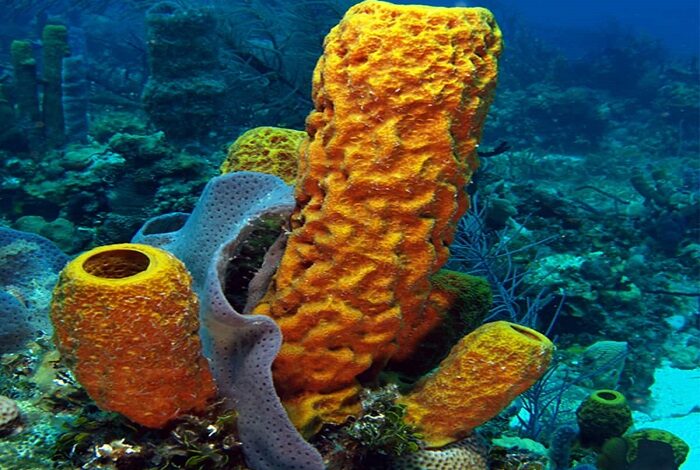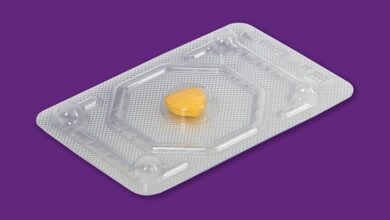Sea sponges Amazing anatomy and structure

Sea sponges (Phylum Porifera) are fascinating and ancient multicellular organisms with a unique anatomy and structure. Unlike most animals, sponges lack true tissues and organs. Their bodies are porous, and their structure is adapted for a filter-feeding lifestyle. Here’s a breakdown of the key anatomical features and structures of sea sponges:
1. Body Structure
Sea sponges have a simple, asymmetrical or radially symmetrical body plan. Their body is full of pores, canals, and chambers that facilitate water flow, which is crucial for feeding, gas exchange, and waste removal. Sponges rely on this water circulation for survival.
- Asymmetry: Most sponges do not exhibit any definite shape, though some species have radial symmetry.
- Body Wall: The body is supported by an outer layer (pinacoderm) and an inner layer of specialized cells (choanocytes). Between these layers is the mesohyl, a jelly-like substance that contains various cells and skeletal components.
2. Skeleton
The skeleton of a sponge provides support and is composed of either:
- Spicules: Tiny, needle-like structures made of silica (siliceous sponges) or calcium carbonate (calcareous sponges).
- Spongin: A protein that forms a fibrous network, giving sponges flexibility and structural support. Spongin is predominant in the Demospongiae class, which includes the commercial bath sponges.
3. Canal System
Sponges have a specialized canal system that facilitates water movement, allowing them to filter feed. There are three main types of canal systems in sponges:
- Asconoid: The simplest structure. Water enters through pores (called ostia) into a large central cavity (spongocoel), and then exits through a single large opening (osculum).
- Syconoid: A more complex structure. The walls of the sponge are folded into canals, increasing the surface area for filtering water. Water flows through radial canals lined with choanocytes before reaching the spongocoel and exiting through the osculum.
- Leuconoid: The most complex and efficient structure. Sponges have a network of chambers rather than a central cavity. Water flows through these chambers lined with choanocytes, maximizing filtration efficiency.
4. Cell Types
Sponges have several specialized cell types, each serving a unique function, despite lacking true tissues:
- Choanocytes (Collar Cells): These cells are essential for filter feeding. They have a flagellum surrounded by a collar of microvilli, which trap food particles as water passes through the sponge. The flagellum creates a water current, drawing water into the sponge.
- Pinacocytes: Flat cells that form the outer surface (pinacoderm) of the sponge. They play a protective role and help regulate the flow of water by contracting to close pores.
- Porocytes: Tubular cells that form the pores (ostia) through which water enters the sponge. They act as gatekeepers, allowing or limiting water flow.
- Amoebocytes (Archaeocytes): These mobile cells within the mesohyl are responsible for distributing nutrients, removing waste, producing reproductive cells, and differentiating into other cell types as needed. They can also produce spicules and spongin.
- Sclerocytes: Specialized amoebocytes that secrete the spicules (silica or calcium carbonate) that form the skeleton of the sponge.
- Spongocytes: Cells that secrete spongin fibers, contributing to the sponge’s flexible skeletal structure.
- Lophocytes: Amoeboid cells that secrete collagen, which is also part of the sponge’s structural framework.
5. Water Flow and Feeding
The water flow system is crucial for sponges’ feeding, respiration, and excretion. The process involves:
- Water entering through small openings called ostia.
- It passes through canals and chambers where the choanocytes filter out food particles (bacteria, plankton).
- Filtered water is expelled through the osculum, a large opening at the top or side of the sponge.
6. Reproduction
Ocean sea sponges can reproduce both sexually and asexually:
- Asexual Reproduction: Through budding or fragmentation, sponges can form clones of themselves. Gemmules, a form of asexual reproduction, are tough, dormant structures that can survive harsh conditions.
- Sexual Reproduction: Most sponges are hermaphroditic, meaning they produce both eggs and sperm, often at different times to avoid self-fertilization. Fertilization is typically internal, where sperm is taken in from the water and fertilizes eggs within the sponge’s body. The resulting larvae are free-swimming before settling and growing into a new sponge.
7. Special Features
- Regeneration: Sponges have remarkable regenerative capabilities. They can regenerate entire parts of their bodies, and in some cases, even regenerate from dissociated cells.
- Symbiotic Relationships: Many sponges host symbiotic algae (zooxanthellae or cyanobacteria) within their tissues, providing them with nutrients through photosynthesis.
Sea sponges are remarkable for their simplicity, yet their anatomy and cellular specialization allow them to thrive in various marine environments. Their porous, filter-feeding system, supported by a flexible skeleton of spicules and spongin, and their ability to regenerate and reproduce both sexually and asexually, make them highly adaptable organisms.
